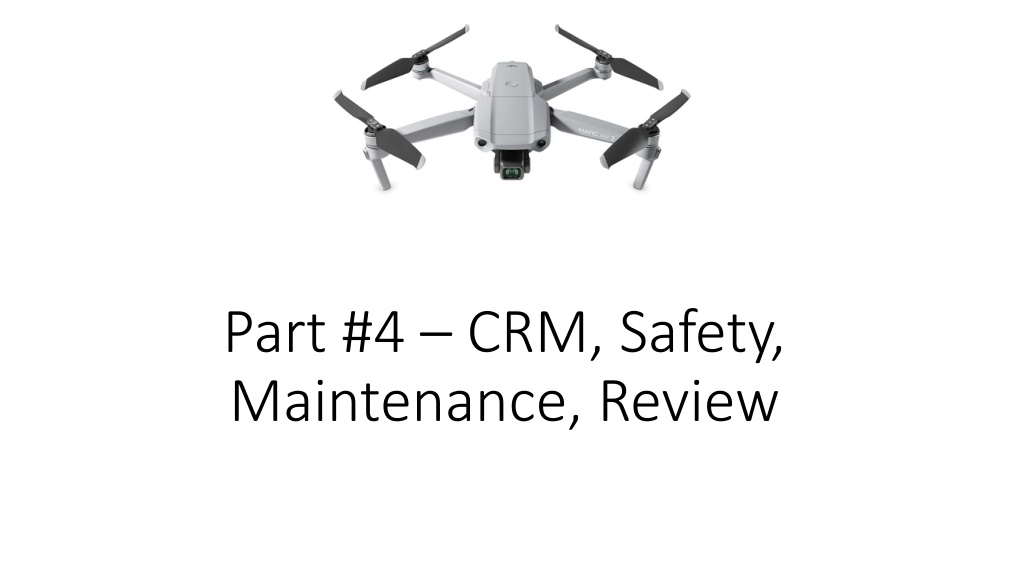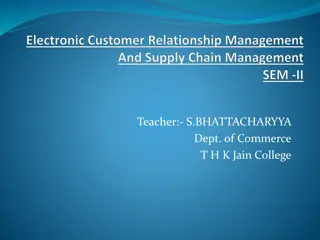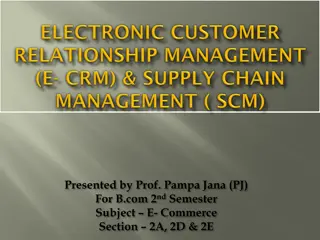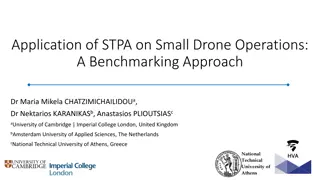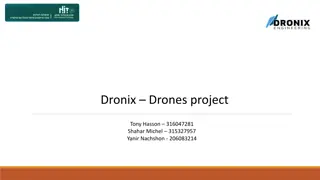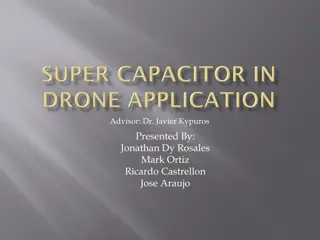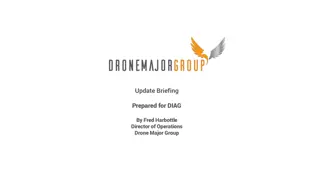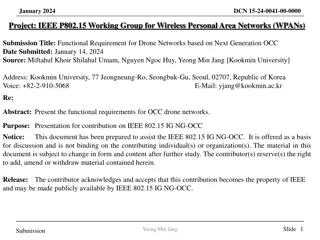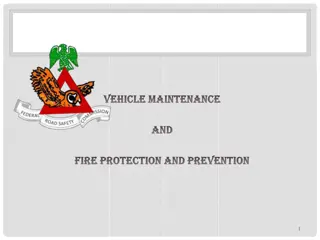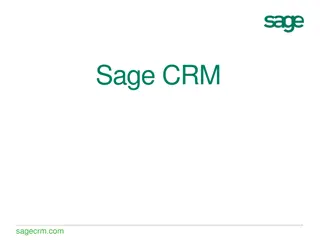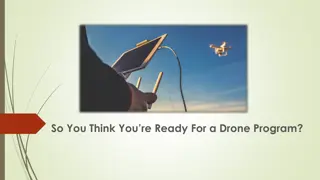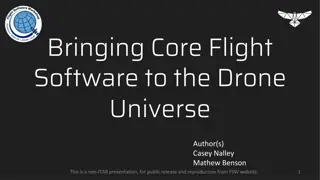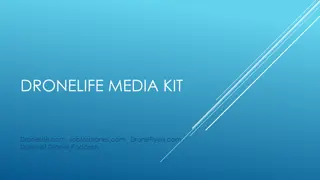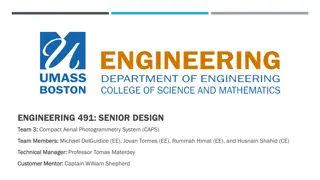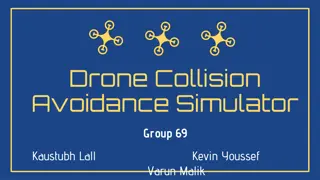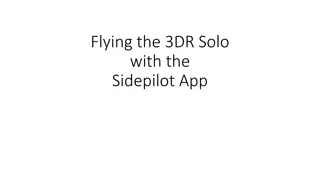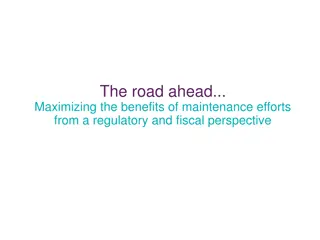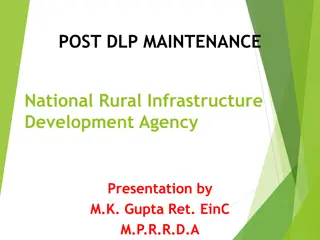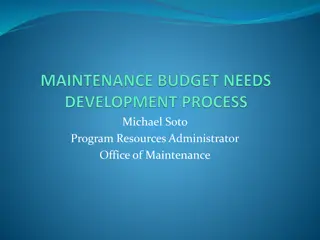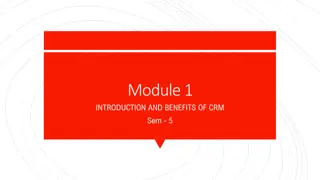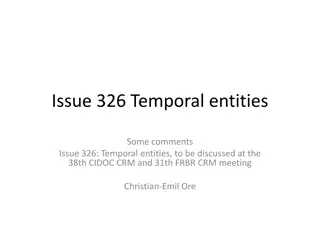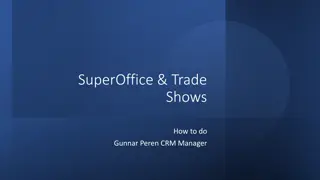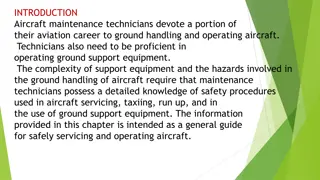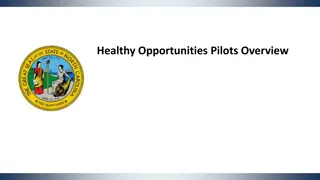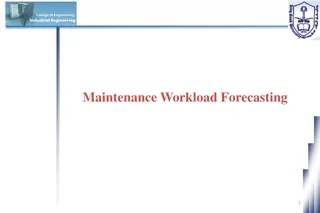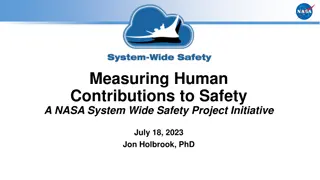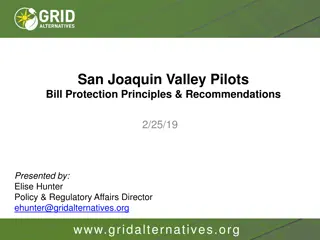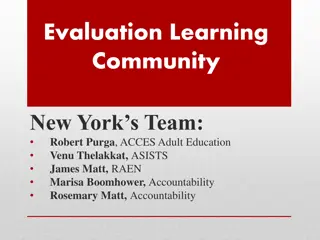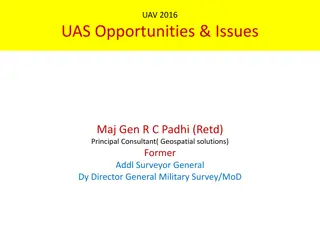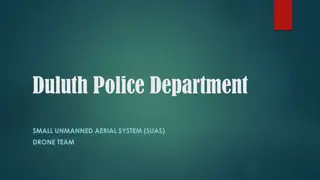CRM, Safety, Maintenance, and Review Guide for Drone Pilots
This guide covers Crew Resource Management (CRM), Safety precautions, Drone Maintenance tips, and a Review checklist for drone pilots. Learn about effective CRM practices, safety guidelines for flying drones, essential maintenance checks, and the I'M SAFE checklist to ensure safe and responsible drone operations. Understand the importance of maintaining logs as per FAA regulations to enhance safety and compliance standards in drone piloting.
Download Presentation

Please find below an Image/Link to download the presentation.
The content on the website is provided AS IS for your information and personal use only. It may not be sold, licensed, or shared on other websites without obtaining consent from the author. Download presentation by click this link. If you encounter any issues during the download, it is possible that the publisher has removed the file from their server.
E N D
Presentation Transcript
Part #4 CRM, Safety, Maintenance, Review
Overview Crew Resource Management (CRM) Safety Drone Maintenance Review
CRM Crew Members Remote Pilot (you) Visual Observer(s) Person manipulating the controls Communication Briefing prior to mission Everybody understands their role
Safety Fly your drone at or below 400 feet Keep your drone within your line of sight Be aware of FAA Airspace Restrictions Respect privacy Never fly near other aircraft, especially near airports Never fly over groups of people, public events, or stadiums full of people Never fly near emergencies such as fires or hurricane recovery efforts Never fly under the influence of drugs or alcohol Hazards Props Uncontrolled Flight Flying over people (students)
The I'M SAFE Checklist I - Illness Colds, allergies, and other common illnesses can cause problems for pilots. Before flying, pilots should think about recent or current illnesses that might affect flight. M - Medication With illness, it's mostly clear when a pilot should or shouldn't fly. But with illness comes medication, and all medications should be scrutinized by both the pilot and his or her doctor before taking it. Many prescription and over-the-counter medications can be dangerous for a pilot to take before flying. S - Stress There are at least three kinds of stress that pilots should be aware of: Physiological, environmental and psychological stress. Physiological stress is stress in the physical sense. It comes from fatigue, strenuous exercise, being out of shape or changing time zones, to name a few. Unhealthy eating habits, illness, and other physical ailments are included in this category, too. Environmental stress comes from the immediate surroundings and includes things such as being too hot or too cold, inadequate oxygen levels or loud noises. Psychological stress can be more difficult to identify. This category of stress includes anxiety, social and emotional factors and mental fatigue. A Alcohol (and Drugs) There's no doubt that alcohol and flying don't mix. Alcohol abuse affects the brain, eyes, ears, motor skills and judgment, all of which are necessary components to safe flight. Alcohol makes people dizzy and sleepy which decreases reaction time. F - Fatigue Pilot fatigue is a difficult problem to address completely, as fatigue affects everyone differently. Some people can function well with little sleep; others don't perform well at all without at least ten hours of sleep per night. There's no medical way to address the sleep issue with pilots -- each pilot must be responsible for knowing his or her limitations. E - Emotion For some people, emotions can get in the way of behaving in a safe, productive manner. Pilots should ask themselves if they are in an emotionally stable state of mind before flying.
Logs The FAA requires logs for pilots and aircraft. The FAA may require inspection of these logs. CFR Part 61/91 Types: Pilot Flights Maintenance FAA does not require logs for the UAS pilots or drones < 55 pounds explicitly FAA Advisory Circular 107-2 (not a regulation) Benefits of Recordkeeping. sUAS owners and operators may find recordkeeping to be beneficial. This could be done by documenting any repair, modification, overhaul, or replacement of a system component resulting from normal flight operations, and recording the time-in-service for that component at the time of the maintenance procedure. Over time, the operator should then be able to establish a reliable maintenance schedule for the sUAS and its components. Recordkeeping that includes a record of all periodic inspections, maintenance, preventative maintenance, repairs, and alterations performed on the sUAS could be retrievable from either hardcopy and/or electronic logbook format for future reference. CFR 107.7 (a) A remote pilot in command, owner, or person manipulating the flight controls of a small unmanned aircraft system must (3) Make available, upon request, to the Administrator any document, record, or report required to be kept under the regulations of this chapter. CFR 107.140 Cat 4 operations requires maintenance records. Cat4 is requires FAA certification and applies primarily to operations over people.
Logs Some apps may keep operation logs. It may be beneficial to track operational time and maintenance on your drone It may be useful to log pilot time to document your experience. Any logs or other data you keep on drone operations may be requested by the FAA.
Operations Near Uncontrolled Airports Commonly Class E or G Runway directions (ex. 35/17) Common Traffic Patterns Default left traffic (left turns) Right traffic may be specified (A/FD) Downwind (900 ), Base (600 ), Final (300 ) Typically to 1 mile from runway. Common Traffic Advisory Frequency (CTAF) Example radio call Resources: Airnav.com, Airport Facility Directory (AFD) https://www.faa.gov/air_traffic/flight_info/aeronav/digital_products/dafd/search/ https://www.airnav.com/
Maintenance Pre-flight Checklist Li Batteries
Pre-Flight Checklist A list of items to check before flying Develop for your drone (most don t really have one) Use it with your students Some apps include an operation checklist (ex. Communications) but cannot address the physical condition.
Advisory Circular 107-2 Checklist 13. Check that control link correct functionality is established between the aircraft and the CS; 14. Check for correct movement of control surfaces using the CS; 15. Check onboard navigation and communication data links; 16. Check flight termination system, if installed; 17. Check fuel for correct type and quantity; 18. Check battery levels for the aircraft and CS; 19. Check that any equipment, such as a camera, is securely attached; 20. Verify communication with UAS and that the UAS has acquired GPS location from at least four satellites; 21. Start the UAS propellers to inspect for any imbalance or irregular operation; 22. Verify all controller operation for heading and altitude; 23. If required by flight path walk through, verify any noted obstructions that may interfere with the UAS; and 24. At a controlled low altitude, fly within range of any interference and recheck all controls and stability. 1. Visual condition inspection of the UAS components; 2. Airframe structure (including undercarriage), all flight control surfaces, and linkages; 3. Registration markings, for proper display and legibility; 4. Moveable control surface(s), including airframe attachment point(s); 5. Servo motor(s), including attachment point(s); 6. Propulsion system, including powerplant(s), propeller(s), rotor(s), ducted fan(s), etc.; 7. Verify all systems (e.g., aircraft and control unit) have an adequate energy supply for the intended operation and are functioning properly; 8. Avionics, including control link transceiver, communication/navigation equipment, and antenna(s); 9. Calibrate UAS compass prior to any flight; 10. Control link transceiver, communication/navigation data link transceiver, and antenna(s); 11. Display panel, if used, is functioning properly; 12. Check ground support equipment, including takeoff and landing systems, for proper operation;
Sample Checklist Items Build your own! Every drone is different. Common items might include: Battery charge Prop condition Camera free (and uncovered) Memory installed No obvious damage to airframe
Review Main difference between Part 107 and Recreational Flyer? How high can you fly? Give an example of a Class C or D airport. Where can you find the area of a Class C airspace? Where can you find the area restricted by a TFR? How often should you inspect your drone? If a drone weighs 2 lbs does it need to be registered? Who has the right-of-way; drone or manned aircraft? Your local airport has AWOS. How might you get this information?
Resources Study Guide: https://www.faa.gov/uas/resources/policy_library/#107 Advisory Circular 107-2: https://www.faa.gov/documentLibrary/media/Advisory_Circular/AC_ 107-2.pdf
